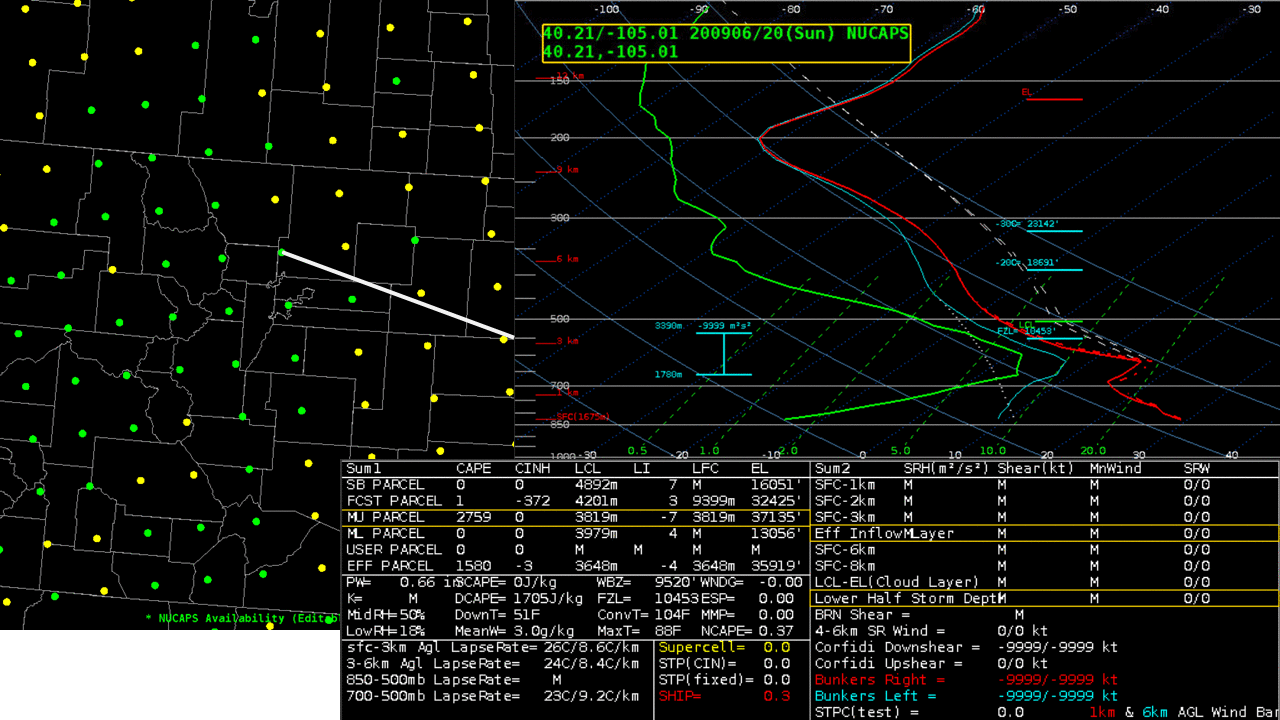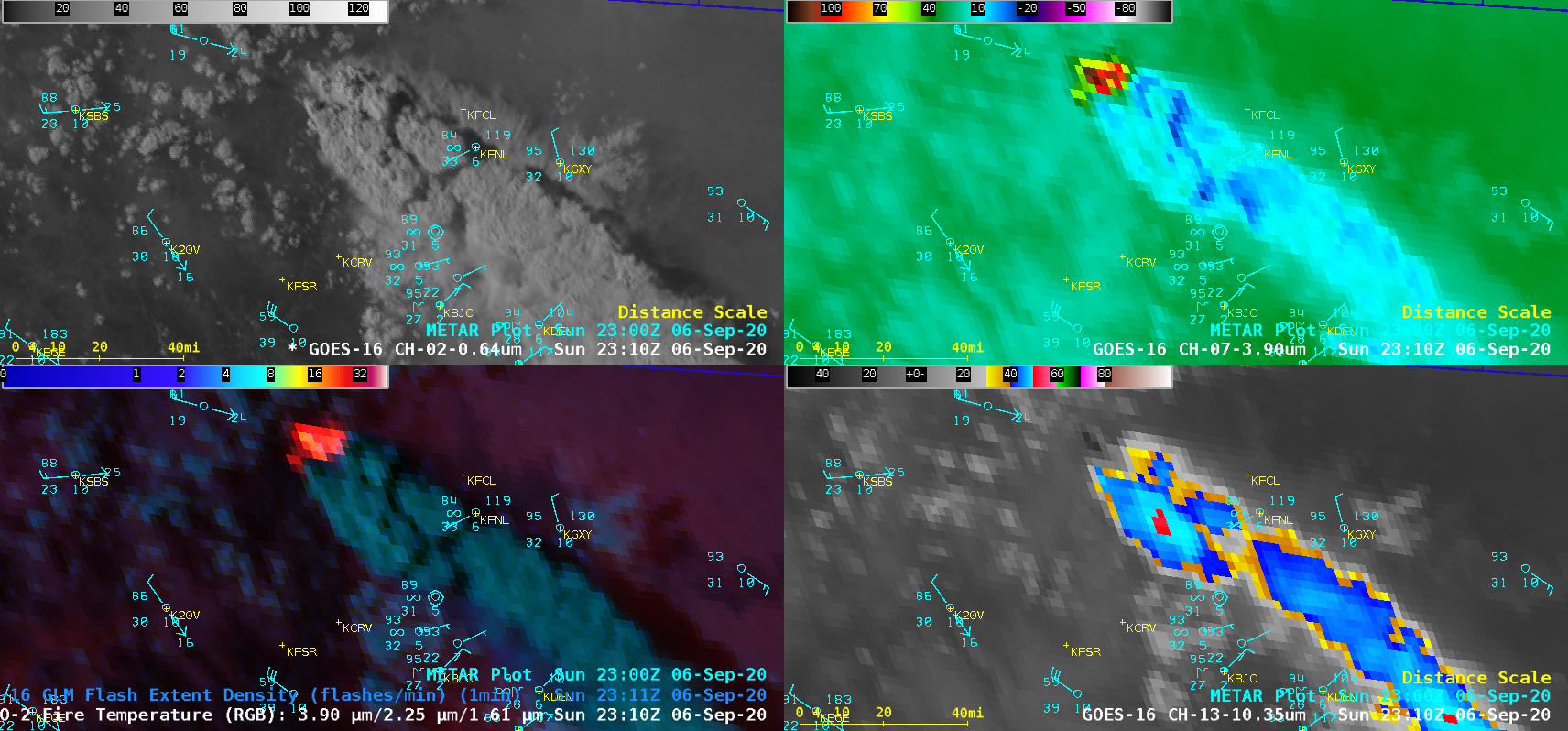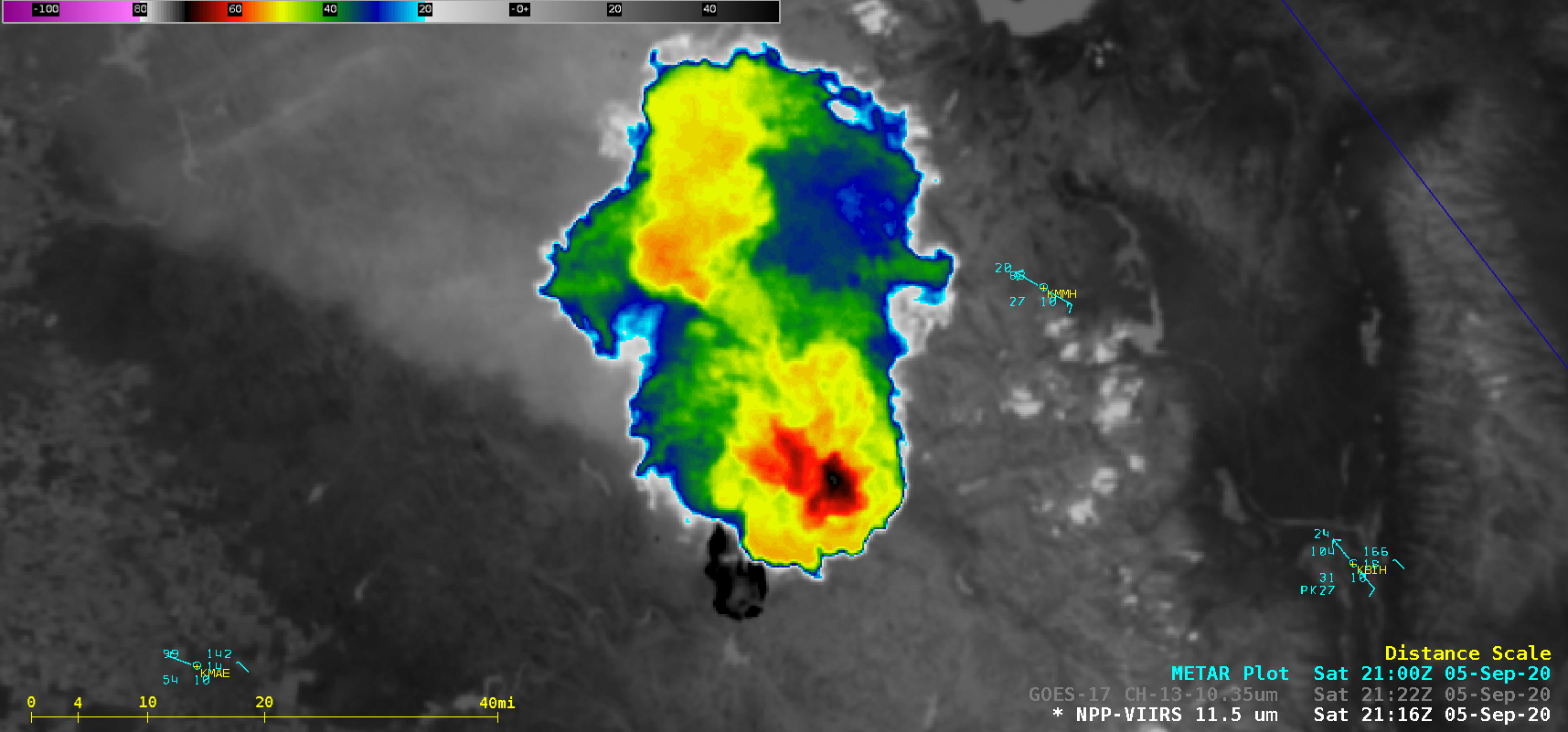Fast-moving wildfires in Washington State
1-minute Mesoscale Domain Sector GOES-17 (GOES-West) “Red” Visible (0.64 µm), Shortwave Infrared (3.9 µm), Fire Temperature Red-Green-Blue (RGB) + GLM Flash Extent Density (FED) and “Clean” Infrared Window (10.35 µm) images (above) showed the smoke plume and thermal signature of the Pearl Hill Fire — which made a rapid ~50-mile run south-southwestward across northern Washington State on 07 September 2020. During this time, northwesterly winds gusted to 40 knots (46 mph) at Omak... Read More





